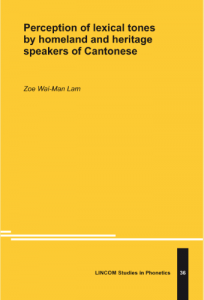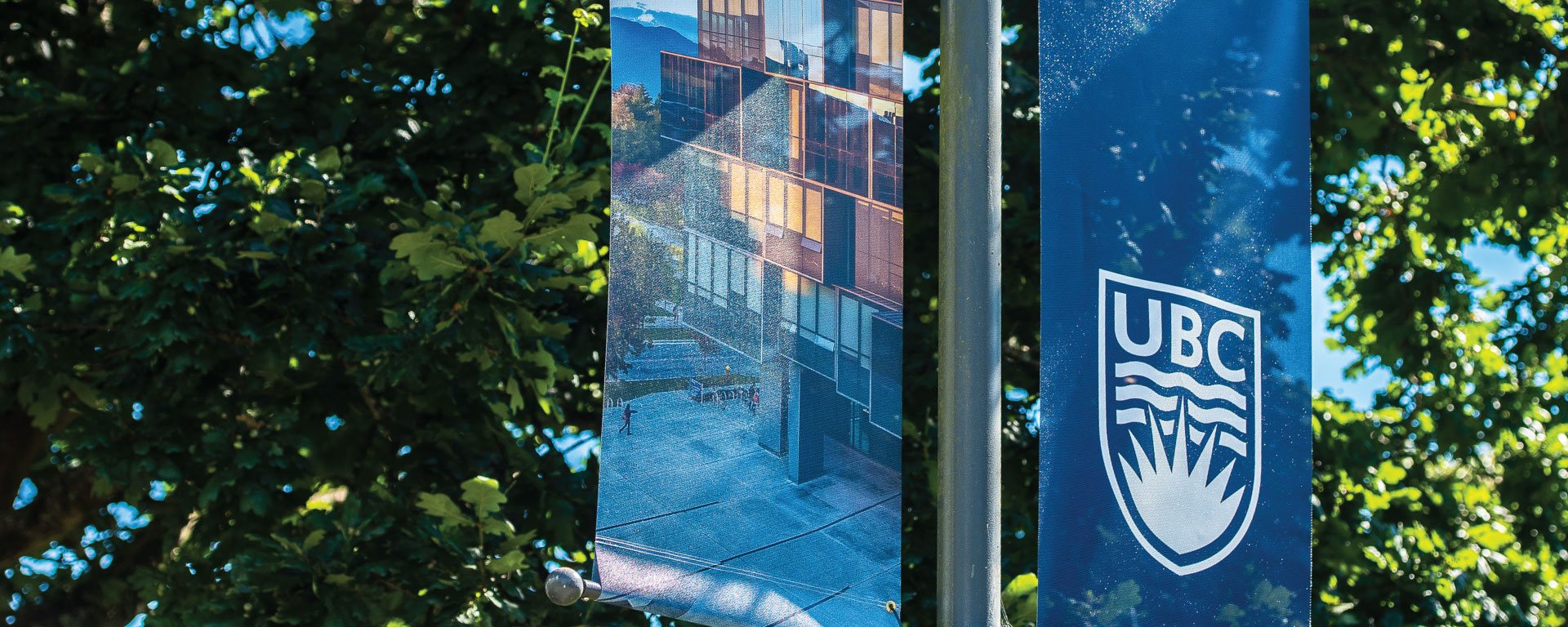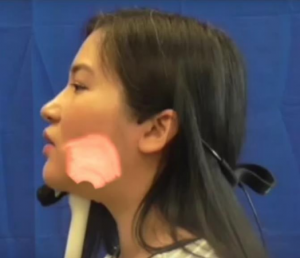Photo credit: UBC Enunciate
Broadly, I’m interested in phonetics and phonology. In particular, I’m intrigued by a population called heritage speakers — people who grew up in a community where the dominant language is not their parents’ language spoken at home. For example, in Vancouver, English is the most commonly used language in society, but many children are raised by parents who speak other languages. When they grow up, they often become more comfortable with English while maintaining some proficiency of their heritage language(s). In my research, I ask how their post-childhood linguistic experience affects the production and perception of speech sounds of their heritage language(s).
Monograph

Title: Perception of lexical tones by homeland and heritage speakers of Cantonese
Publisher: LINCOM
Series: Studies in Phonetics
Year: 2022
ISBN: 9783969390566 (hardbound)
Abstract
Lay summary
The purpose of this research is to investigate effects of post-childhood linguistic experience on bilingual speakers’ ability to perceive speech sounds of a first language that uses pitch variation to distinguish word meaning. Sixty-eight young adults raised by Cantonese-speaking parents performed a listening task. Cantonese words and sentences were played and participants were instructed to select a picture that represented what they heard. Half of the subjects grew up in Hong Kong, and the other half grew up in Canada and generally felt more comfortable with English. Although both groups were exposed to Cantonese from birth, the Hong Kong group was better at paying attention to the pitch of a word, while the Canadian group relied on the overall meaning of a sentence relatively more often. These results inform us how multilingual competence works in the human mind, especially in a world where migration is common.
Book chapters and journal articles
Bliss, H., Cheng, L., Schellenburg, M., Lam, Z., Pai, R., & Gick, B. (2017). Ultrasound technology and its role in Cantonese pronunciation teaching and learning. In M. O’Brien & J. Levis (Eds). Proceedings of the 8th Pronunciation in Second Language Learning and Teaching Conference, ISSN 2380-9566, Calgary, AB, August 2016 (pp. 33-46). Ames, IA: Iowa State University.
Gambarage J., Anghelescu, A., Burton, S., Dunham, J., Guntly, E., Keupdjio, H., Lam, Z. W.-M., Osa- Gómez, A., Pulleyblank, D., Si, D., Yoshino, Y. & Déchaine R.-M. (2017). The Nata Documentation Project: An Overview. In Jason Kandybowicz and Harold Torrence (eds.) Africa’s Endangered Languages: Documentary and Theoretical Approaches. Oxford University Press.
Anghelescu, A., Gambarage, J., Lam, Z. W.-M., & Pulleyblank, D. (2017). Nominal and verbal tone in Nata: An allomorphy-based account. In Jason Kandybowicz and Harold Torrence (eds.) Africa’s Endangered Languages: Documentary and Theoretical Approaches. Oxford University Press.
Heim, J., Keupdjio, H., Lam, Z. W.-M., Osa-Gómez, A., Thoma, S., & Wiltschko, M. (2016). Intonation and particles as speech act modifiers: A syntactic analysis. Studies in Chinese Linguistics, 37(2), 109-129.
Lam, Z. W.-M. (2016). The verbal morphotonology of Nata. In A. Anghelescu, J. Dunham, & N. Weber (eds.) UBC Working Papers in Linguistics, 44, 53-76.
Lam, Z. W.-M. (2014). A complex ForceP for speaker- and addressee-oriented discourse particles in Cantonese. Studies in Chinese Linguistics, 35(2), 61-80.
Heim, J., Keupdjio, H., Lam, Z. W. M., Osa-Gómez, A., & Wiltschko, M. (2014). How to do things with particles. In Proceedings of the 2014 Annual Conference of the Canadian Linguistic Association.
Wong, C. S., Bauer, R. S., & Lam, W. M. Z. (2009). The integration of English loanwords in Hong Kong Cantonese. Journal of Southeast Asian Linguistics Society, Vol. 1, 251-266.
Edited volumes
Guntly, E., Lam, Z., Anghelescu, A. & Weber N. (Eds.). (2015). Proceedings of The Okanagan Workshop on Innovation in Language Teaching. Okanagan, BC: UBCWPL.
Weber, N., Guntly, E., Lam, Z. & Chen, S. (Eds.). (2015). Papers for the Fiftieth International Conference on Salish and Neighbouring Languages. Vancouver, BC: UBCWPL.
Lam, Z. & Weber, N. (Eds.). (2014). Proceedings of the Northwest Linguistics Conference 29. Vancouver, BC: UBCWPL.
Conference presentations
Lam, Z. & Pai, R. (2024). The role of systematic Cantonese language education in nurturing diasporic identities: Lessons from a university in North America. Paper presented at the Workshop on Hong Kong Cultures, Arts and Languages in the UK, University of Sheffield.
Lam, Z. (2023). Juggling descriptivism and prescriptivism in a Cantonese language class. Flash talk delivered at a special panel Towards an Inclusive Pedagogy for Cantonese Language Education, The 27th International Conference on Yue Dialects (online), The Ohio State University, OH.
Lam, Z. & Pai, R. (2023). 海外大學粵文教育之機遇與挑戰 [Opportunities and challenges of teaching written Cantonese in an overseas university]. Paper presented at Kwaa Jyut: International Conference on Cantonese Writing from an Interdisciplinary Perspective (online), The Chinese University of Hong Kong, Hong Kong.
Lam, Z. & Pai, R. (2022). Cantonese language curriculum design for a diverse student population: A case study of a Canadian university. Paper presented at What is Hua? Conceptualization, Methodology and Research on Sinophone Borderlands and the Interactions on the Edges, Palacký University Olomouc, Czech Republic.
Lam, Z. W.-M. (2022). The role of content creation in the construction of heritage learners’ identity. Paper presented at the 6th Workshop of Innovations in Cantonese Linguistics (online), The Ohio State University, OH.
Chow, D., Chow, J. & Lam, Z. W.-M. (2021). Beyond a language: The role of Cantonese schools in the (re-)construction of Chinese Canadian identity. Paper presented at The Second Symposium on Teaching Cantonese As a Second Language (online), The Chinese University of Hong Kong.
Lam, Z. W.-M. (2021). Enhancing learner autonomy through curriculum and assessment. Talk delivered at the UBC Heritage Language Teaching Workshop (online), University of British Columbia, Vancouver, BC.
Lam, Z. W.-M. (2020). Teaching literacy skills to heritage learners. Paper presented at The Fifth Workshop on Innovations in Cantonese Linguistics (online), The Ohio State University, Columbus, OH.
Lam, Z. W.-M. (2020). Chinatown as a site for place-based education of Cantonese Language and Culture. Paper presented at The Fifth Workshop on Innovations in Cantonese Linguistics (online), The Ohio State University, Columbus, OH.
Lam, Z. W.-M. (2019). What you heard versus what makes sense: Tone identification strategies used by Cantonese-dominant and English-dominant bilinguals. Paper presented at Graduate and Postdoctoral Fellow Research Day, UBC Language Sciences, University of British Columbia, Vancouver, BC.
Cheng, L. & Lam, Z. W.-M. (2018). Ultrasound technology in teaching and learning. Special demo session at The Fourth Workshop on Innovations in Cantonese Linguistics, University of British Columbia, Vancouver, BC.
Lam, Z. W.-M. (2018). When the Little Prince Speaks Cantonese. Paper presented at Cantonese Worlds 2 Workshop, University of British Columbia, Vancouver, BC.
Lam, Z. W.-M. (2017). Tone identification strategies used by heritage Cantonese speakers in Canada. Paper presented at the 29th North American Conference on Chinese Linguistics (NACCL-29), Rutgers University, New Brunswick, NJ.
Lam, Z. W.-M. (2017). Bridging the gap between linguistic and cultural spaces in the language classroom. Paper presented at the International Conference on Cultural Studies and Education, University of British Columbia, Vancouver, BC.
Bliss, H., Cheng, L., Schellenberg, M., Lam, Z. W.-M., Pai, R., & Gick, B. (2016). Ultrasound technology and its role in Cantonese pronunciation teaching and learning. Paper presented at the 8th Pronunciation in Second Language Learning and Teaching Conference, University of Calgary, Calgary, AB.
Lam, Z. W.-M. (2016). The morphology of Nata reduplication. Poster presented at the 47th Annual Conference on African Linguistics, University of California, Berkeley, CA.
Lam, Z. W.-M., Hall, K. C., & Pulleyblank, D. (2016). Temporal location of perceptual cues for Cantonese tone identification. Paper presented at The 3rd Workshop on Innovations in Cantonese Linguistics, Ohio State University, Columbus, OH.
Yu, H. & Lam, Z. W.-M. (2015). The Past, Present and Future of Cantonese Language and Culture. Keynote talk, Cantonese Worlds Workshop, University of British Columbia, Vancouver, BC.
Lam, Z. W.-M. & Schellenberg, M. (2015). Intersections Between Language and Music. Cantonese Worlds Workshop, University of British Columbia, Vancouver, BC.
Wiltschko, M., Thoma, S., Osa-Gómez del Campo, A., Keupdjio, H., Heim, J., & Lam, Z. W.-M. (2015). Towards a typology for the grammar of discourse: A case study of confirmationals. Paper presented at the 11th Conference of the Association for Linguistic Typology, University of New Mexico, Albuquerque, NW.
Lam, Z. W.-M. (2014). A unified account for biased and non-biased questions in Cantonese. Paper presented at the joint conference of the 22nd Annual Conference of the International Association of Chinese Linguistics and the 26th North American Conference on Chinese Linguistics, University of Maryland, College Park, MD.
Anghelescu, A., Gambarage, J., Lam, Z. W.-M., & Pulleyblank, D. (2014). A unified account of nominal and verbal tone in Nata. Paper presented at the 45th Annual Conference on African Linguistics, Kansas University, Lawrence, KS.
Heim, J., Keupdjio, H., Lam, Z. W.-M., Osa-Gómez, A., & Wiltschko, M. (2014). How to do things with particles. Paper presented at the Annual Conference of the Canadian Linguistics Association, Brock University, ON.
Lam, Z. W.-M. (2013). A complex ForceP for speaker- and addressee-oriented discourse particles in Cantonese. Poster presented at the 25th North American Conference on Chinese Linguistics, University of Michigan, Ann Arbor, MI.
Lam, Z. W.-M. (2013). Approaches to Nata morphophonology. Paper presented at The 29th Northwest Linguistics Conference, University of British Columbia, Vancouver, BC.
Lam, Z. W.-M., Thoma, S., & Wiltschko, M. (2013). The syntax of grounding. Poster presented at Conference of the Canadian Linguistics Association, University of Victoria, Victoria, BC.
Lam, Z. W.-M., Thoma, S., & Wiltschko, M. (2013). Thinking about you. Paper presented at Workshop on Interfaces at the Left Periphery, University of Michigan, Ann Arbor, MI.

